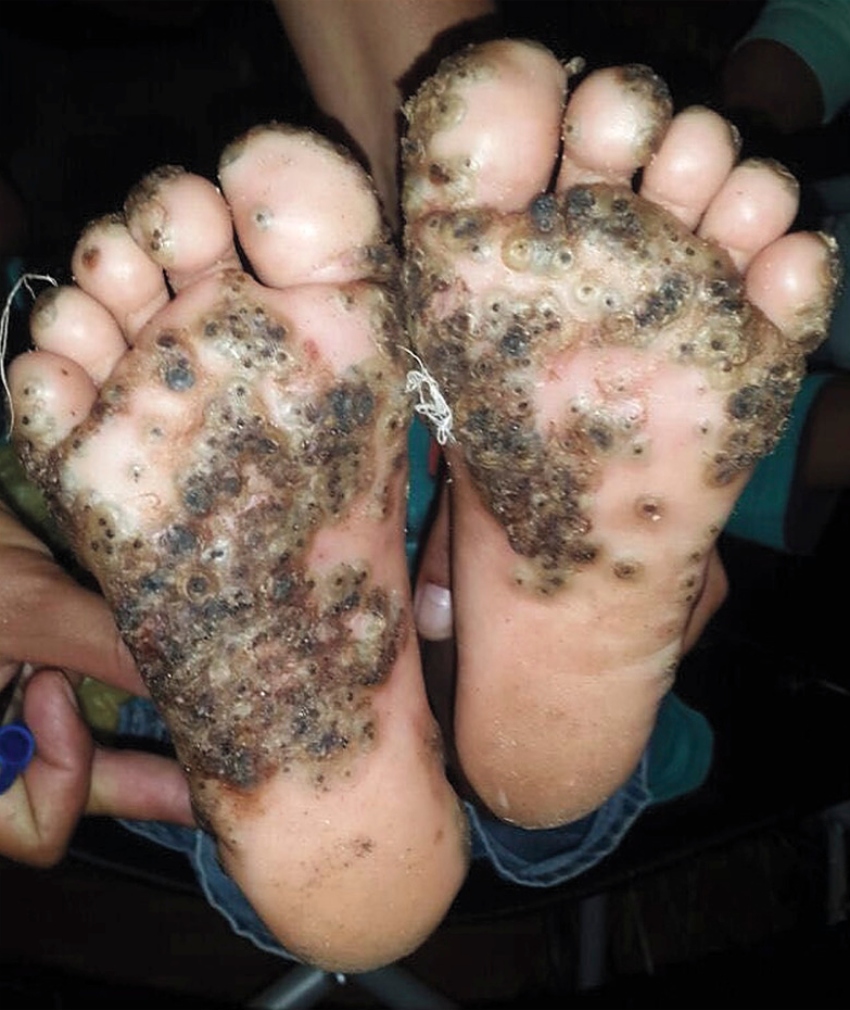It might have seemed like a lark for a girl vacationing with her family in Brazil to enjoy playing while barefoot in a local pigsty.
But the 10-year old soon developed infections on the bottom of both feet involving numerous papules that felt itchy and looked terrible.
Each lesion, brown in color, featured black dots in their center and resulted from exposure to parasitic sand fleas contained in the pig dung.
Her foot infestation became a medical case that was ultimately published as a story in the New England Journal of Medicine.

New England Journal Of Medicine
The article featured a very sobering photo that showed the infectious papules.
Two weeks went by after the girl was exposed to the pigsty environment before she sought medical attention at a health clinic.
She said she had lesions on her feet for 10 days by that point.
Her medical history revealed that she had already receive a vaccination for tetanus.
Doctors informed the girl and her parents that she was suffering from tungiasis, a parasitic infection caused by Tunga penetrans, more commonly known as female sand fleas.
The fleas were able to burrow into her skin by entering at the soles of her feet, her toes, and at the rim of her heels and feet.
The constant itching she experienced was caused by the fleas feeding on her blood, causing their rapid growth.
Luckily, doctors were able to remove the fleas from both feet and treat the wounds they caused.
She has since enjoyed complete healing of her lesions and her feet have returned to normal.
This type of sand flea is native to tropical and subtropical climates worldwide.
They thrive, says the World Health Organization, in rural communities, shanty towns and anywhere living conditions are sub-standard.
Please share this article to spread awareness!
